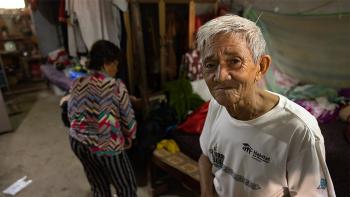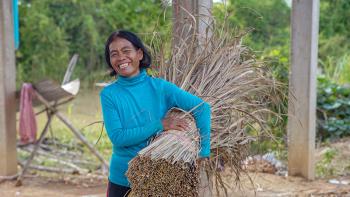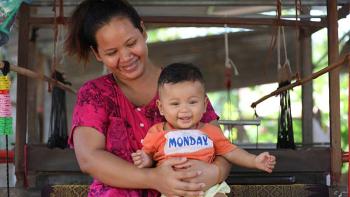Quick Facts
Individuals served in FY22: 161,815
- Through new construction – 855
- Through incremental building – 42,525
- Through repairs – 580
- Through market development – 117,855
Volunteers hosted in FY22: 76
Other facts:
- Population: 16.6 million
- Life expectancy: 70 years
- Unemployment rate: 0.4 percent
- Population living below poverty line: 17.8 percent
Source: World Factbook
Habitat for Humanity in Cambodia
While poverty has decreased significantly, many Cambodian families are hovering just above the poverty line of US$1.25 a day. Nearly three quarters of the population still live on less than US$3 a day, based on World Bank’s data. Poverty is largely concentrated in the rural areas though urban poverty is on the rise. Habitat for Humanity Cambodia seeks to break the cycle of poverty through safe, durable, affordable housing solutions. Since 2003, Habitat Cambodia has enabled over 22,000 families to build strength, stability and self-reliance through shelter.
Housing needs in Cambodia
Having reached lower middle-income status in 2015, Cambodia aspires to be an upper middle-income country by 2030. Between 2009 and 2019, Cambodia grew rapidly and reduced poverty. However, the COVID-19 pandemic dealt a setback. Around 460,000 individuals fell back into poverty, according to the World Bank. Nearly four in 10 persons live in urban areas, based on Cambodia’s 2021 socio-economic survey. Urbanization in Cambodia poses many challenges including access to affordable housing and other basic services for urban dwellers. Almost 40% of Cambodia’s urban population lives in slums, based on data shared in a May 2023 report by UN-Habitat. Cambodia needs to build an additional 1 million homes by 2030 for its booming population, according to the government.
How Habitat addresses the need in Cambodia
Habitat Cambodia aims to enable at least 750,000 people in Cambodia to thrive in adequate, equitable, and resilient housing by 2028 through the key following programs:
Protection and inclusion
Habitat Cambodia collaborates with partners and communities to build adequate, equitable, and resilient housing with vulnerable individuals and households. We build adequate housing and settlements through inclusive, integrated solutions and through organizing or enabling vulnerable groups and disadvantaged communities to raise their voice on land and housing issues.
Climate change adaptation
We are increasing our efforts to influence communities and government authorities at the grassroots and sub-national levels to build resilience to disasters, emergencies and climate change through community-driven disaster risk management.
Constructive engagement
By engaging policymakers and decision-makers, we influence policies, systems and norms that advance affordable and adequate housing through evidence-based research, community empowerment and institutional and network strengthening.
Urban governance
Habitat Cambodia facilitates dialogues and negotiations between neighborhood communities and city and provincial authorities to define housing and settlement solutions in a collaborative or consultative manner.
Livelihood and market development
We promote inclusive housing through engagement with market actors.


